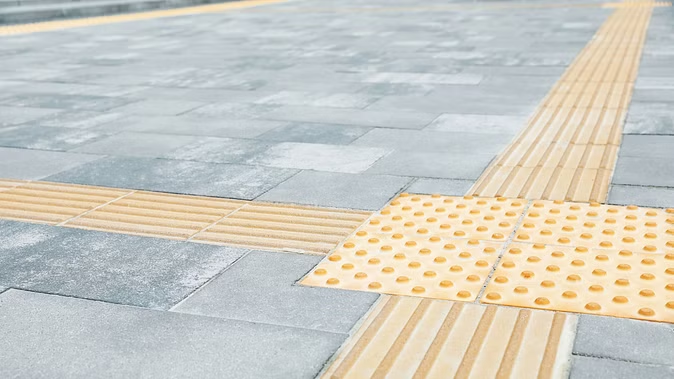You must have often seen that there are yellow rough tiles on the metro station. Many people have this question in their mind why are these tiles installed? Many people might think that these tiles are installed only to enhance the beauty of the station. The big thing is that these tiles are not only on metro stations but are also seen on railway stations, airports, footpaths of big cities, etc. If you look carefully, most of the yellow tiles have a strip of straight lines, while some tiles have a circular button-like shape. Many people think that these rough tiles are there so that no one can slip, but it is not so.

That's why these yellow tiles are there.
These tiles are called tactile tiles, the path on which it is made is called tactile path. Tactile tiles are specially installed for visually impaired and low-vision persons. These tiles were first used in Japan. The different types of textures and patterns present on these tiles help visually impaired people to identify the way ahead. People who are unable to see walk with the help of sticks and these tiles. When visually impaired people touch the floor with the help of sticks, the raised textures present on the tiles help them to move forward. Let us tell you that tactile tiles are also called Braille tiles.
Tactile tiles are mainly of two types--
1. Warning tiles
These usually have raised circular dots, which look like buttons. These tiles indicate that one has to stop there. These tiles are mostly installed on the sides of stairs, sides of platforms, in front of ticket counters, in front of elevators, and other stopping places.
2. Directional tiles
Those which have straight lines are called directional tiles. These have a straight line that indicates to the visually impaired people to walk in the correct and straight direction. These tiles are often used on passageways, corridors, and platforms.
These tiles have different types of patterns that indicate different locations or facilities. For example, a specific pattern may indicate an elevator, while another pattern may indicate a toilet. These tiles provide both warning and directional information.
(PC: Adobe stock)










